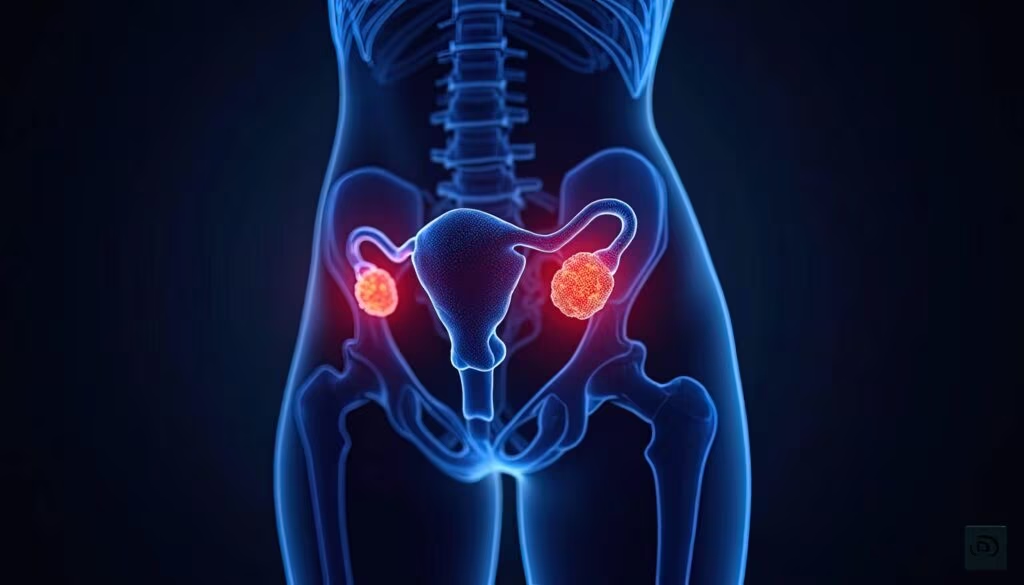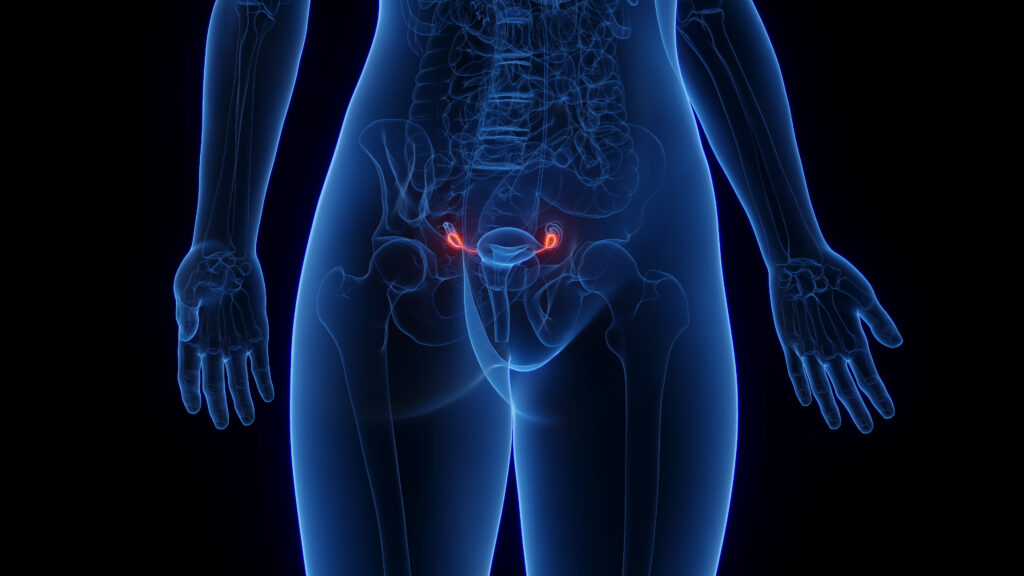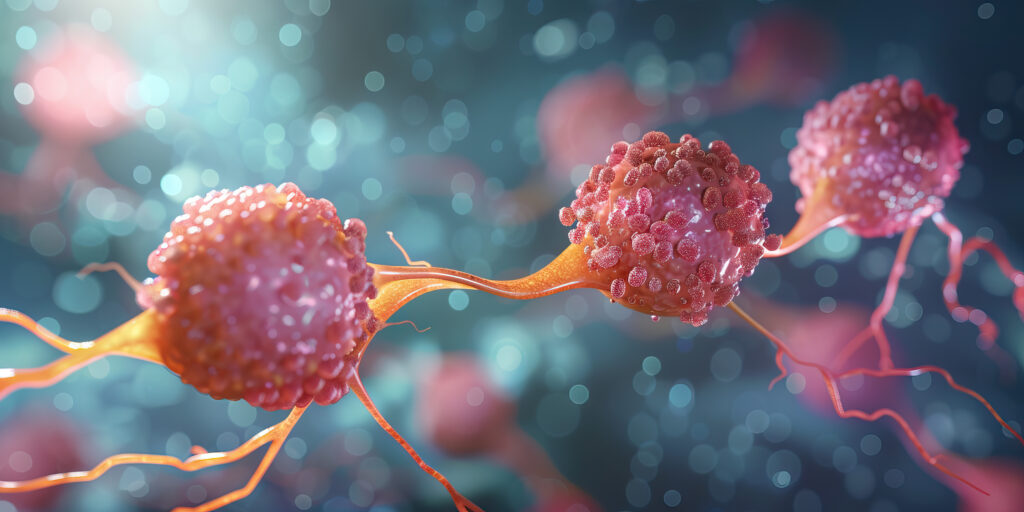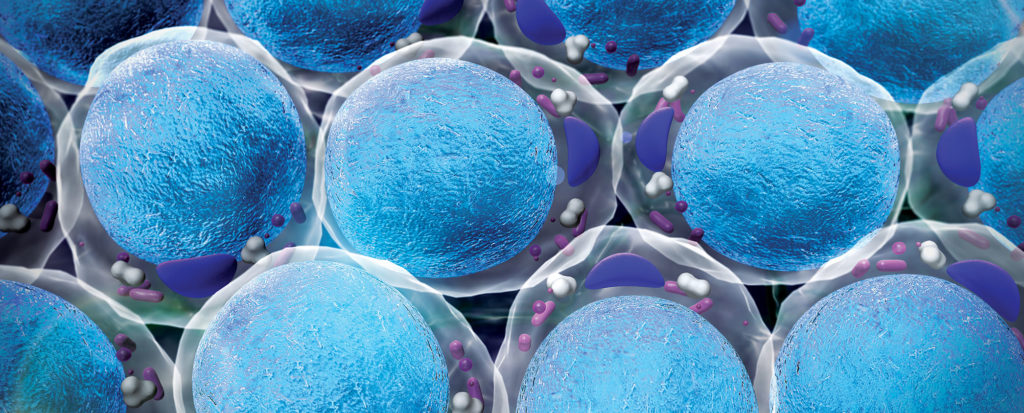Erectile dysfunction (ED) is a highly prevalent disease that is expected to affect 322 million men by 2025. Risk factors include ageing, cardiovascular disease (CVD), diabetes, hyperlipidaemia, smoking, absence of physical exercise and obesity. ED is associated with depression and has a negative impact on patients’ and partners’ quality of life. Potentially reversible causes include specific endocrinopathies, pelvic or perineal trauma, drugs, lifestyle and psychosocial factors. However, the majority of men with ED will not be treated with cause-specific treatment options.
Erectile dysfunction (ED) is a highly prevalent disease that is expected to affect 322 million men by 2025. Risk factors include ageing, cardiovascular disease (CVD), diabetes, hyperlipidaemia, smoking, absence of physical exercise and obesity. ED is associated with depression and has a negative impact on patients’ and partners’ quality of life. Potentially reversible causes include specific endocrinopathies, pelvic or perineal trauma, drugs, lifestyle and psychosocial factors. However, the majority of men with ED will not be treated with cause-specific treatment options.
The advent of new oral drugs has revolutionised the treatment of ED. Optimal therapy for patients with ED may be challenging. In order to properly counsel patients with ED, physicians must be fully informed on all treatment options as part of a patient-centred model of care for ED.
Oral Pharmacotherapy
Sildenafil
Sildenafil was the first phosphodiesterase type 5 (PDE5) inhibitor, and it has been available since 1998. It is administered orally on demand in 25mg, 50mg and 100mg doses in the presence of sexual stimulation (maximum dosing once-daily). The recommended starting dose is 50mg. The onset of action can be less than 30 minutes and efficacy may be maintained for up to 12 hours. A heavy fatty meal results in reduced and prolonged absorption. Alcohol does not have an impact on absorption in regular doses.
Successful sexual intercourse was demonstrated in 69% of all attempts for the men receiving sildenafil (compared with 22% for placebo; p<0.001) (see Table 1). Mean numbers of successful attempts per month were 5.9 for sildenafil compared with 1.5 for placebo. In a three-year study, 32% of patients discontinued treatment. Only 6.7% of discontinuations were treatment-related (5.7% for insufficient response and 1% for adverse events). Most patients received 100mg sildenafil doses (88% at three years). Improvement in the ability to achieve erections was reported by 71% of patients in a clinical practice setting.
The efficacy of sildenafil in almost every subgroup of patients (elderly men, patients with ischaemic heart disease, hypertension, chronic renal failure (CRF), spinal cord injury, depression and bilateral nerve-sparing radical prostatectomy) is well established. Lower efficacy rates are expected in diabetic patients (50–60%).
Both patients and partners report higher levels of satisfaction (up to 90%) after sildenafil treatment relative to placebo. Sildenafil also improved all aspects of health-related quality of life.
Common adverse events are presented in Table 2. They are usually mild and self-limited by continuous use, and the drop-out rate due to adverse events is similar to that of placebo. No increase in myocardial infarction (MI) rates was demonstrated. Concomitant use of sildenafil with nitrates is contraindicated. Sildenafil labelling includes a precaution advising that 50mg or 100mg (not 25mg) of sildenafil should not be taken within a four-hour window of an alpha-blocker. This may not be the case when tamsulosin or alfuzosin is used.
Tadalafil
Tadalafil is a PDE5 inhibitor with a different pharmacokinetic profile. It is administered orally on demand in 10mg and 20mg doses in the presence of sexual stimulation. The recommended starting dose is 10mg. The earliest time to onset of action leading to successful intercourse can be only 30 minutes; however, as time taken to reach peak plasma concentration (Tmax) is two hours, it seems reasonable to instruct patients to take tadalafil approximately two hours before sexual intercourse, with a maximum dosing frequency of once every other day, as its efficacy is maintained at least for 36 hours. Absorption is not affected by food or regular alcohol intake.
Efficacy was assessed in 11 randomised double-blind placebo-controlled clinical studies (see Table 1). Mean International Index for Erectile Function (IIEF) erectile function (EF) domain score changes were 0.9, 6.5 and 8.6 for placebo and tadalafil 10mg and 20mg, respectively. End-point scores were 15.3, 21.1 and 23.2, respectively. Sexual Encounter Profile question 2 (SEP2) changes were three, 24 and 30, and SEP3 changes were eight, 34 and 46 for placebo and tadalafil 10mg and 20mg, respectively. SEP2 end-points were 50, 73 and 80, respectively, while SEP3 end-points were 31, 58 and 68, respectively (all p<0.001). Post-marketing studies confirmed these results.
Thirty-six hours after tadalafil dosing, 59.2% of intercourse attempts were successful compared with 28.3% for placebo (p<0.001). Successful intercourse attempts at approximately 24 hours after treatment were also significantly greater with tadalafil (52.9%) than with placebo (29.1%; p<0.001).
The efficacy of tadalafil was also demonstrated in patient subpopulations (age, psychogenic causes, spinal cord injuries and bilateral nerve-sparing radical prostatectomy). Lower efficacy rates are expected in diabetic patients. The mean IIEF EF domain score was 13.4, 19.2 and 19.9 for placebo and tadalafil 10mg and 20mg, respectively (p<0.001). SEP3 success rates were 22, 49 and 53, respectively (p<0.001).
Tadalafil significantly improved the mean IIEF intercourse satisfaction, overall satisfaction domain scores and satisfaction with the hardness of erection, measured using SEP4. In a multicentre European study, Mirone et al. compared on-demand tadalafil 20mg treatment with continuous use of tadalafil 20mg, three times per week for five to six weeks. On-demand tadalafil 20mg was preferred by 57.8% of men, while 42.2% preferred the three-times-perweek treatment.
Common adverse events are presented in Table 2. They are usually mild and self-limited with continuous use of the drug. Discontinuation rate due to adverse events was 6.3%. Concomitant use of tadalafil with nitrates is contraindicated. The concomitant use of tadalafil with doxazosin may result in significant hypotension and is contraindicated. This is not the case for tamsulosin or alfuzosin. CV adverse events were comparable with placebo in terms of MI or hypotension.
Vardenafil
Vardenafil is another PDE5 inhibitor administered orally on demand in 5mg, 10mg and 20mg doses in the presence of sexual stimulation (maximum dosing once-daily). The recommended starting dose is 10mg. The earliest time to onset of action leading to successful intercourse can be only 10 minutes and efficacy may be maintained for up to 12 hours. A heavy fatty meal (more than 57% in fat calories) results in reduced and prolonged absorption. Alcohol does not have an impact on absorption in regular doses.
Treatment with vardenafil for 12 weeks significantly improved mean scores for IIEF question 3 (Q3) and Q4 as well as EF domain score (see Table 1). During the final four weeks, 71–75% of intercourse attempts were successful for patients using vardenafil compared with 40% for placebo. In a 26-week study, SEP2 improved from 40–45% at baseline to 66% (5mg group), 76% (10mg group) and 81% (20mg group; p<0.0001). SEP3 improved from 14–15% at baseline to 52%, 65% and 67% (5mg, 10mg and 20mg groups, respectively; p<0.0001). Similar results were demonstrated in another study in Europe. The efficacy of vardenafil in improving EF has been demonstrated for up to two years of treatment in a randomised double-blind fixed-dose study.
Efficacy was also demonstrated in subpopulations with ED (age, cause and severity of ED, hypertension, depression and nerve-sparing radical prostatectomy). In diabetic patients, SEP2 success rates were 64% with vardenafil 20mg compared with 36% in the placebo group, while SEP3 success rates were 54% and only 23% in the placebo group. Treatment with vardenafil in ED patients previously unresponsive to sildenafil produced a significant improvement in EF domain score, SEP2 and SEP3 success rates.
Patients taking vardenafil 10mg and 20mg showed significantly greater improvement compared with placebo in IIEF domain scores measuring intercourse satisfaction, orgasmic function and overall satisfaction.
Common adverse events are presented in Table 2. They are generally mild to moderate and decrease during long-term treatment. Concomitant use of vardenafil with nitrates is contraindicated. CV adverse events were similar to placebo.
Apomorphine
Apomorphine is a dopamine receptor agonist (DRA) that mainly acts on D2-like receptors and is administered sublingually on demand in 2mg or 3mg doses in the presence of sexual stimulation.
Efficacy rates (erections hard enough for intercourse) range from 48–55%. Due to rapid absorption, 71% of erections were achieved within 20 minutes. Satisfactory attempts of 50–60% have been described after repeat doses (four or more) of apomorphine. The most common adverse events are nausea (7%), headache (6.8%) and dizziness (4.4%). These events are generally mild in nature and self-limited. Apomorphine is not contraindicated in patients taking nitrates or antihypertensive drugs of all classes and it does not affect vital signs.
However, other studies demonstrated significantly lower efficacy rates (9.1–38.3%) and higher incidence of nausea (11.7%). Furthermore, comparative data with sildenafil are disappointing for apomorphine. Currently, the use of apomorphine is limited to patients with mild to moderate ED or psychogenic causes. It may also represent a first-line treatment in patients with certain contraindications (e.g. use of nitrates) for the use of PDE5 inhibitors.
Intracavernous Pharmacotherapy
The intracavernous administration of vasoactive drugs was the first medical treatment used for ED, more than 20 years ago. Alprostadil (5–40μg) is the first and only drug approved worldwide for intracavernous administration. Papaverine (7.5–45mg) and phentolamine (0.25–1.5mg) and combinations of papaverine (8–16mg), phentolamine (0.2–0.4mg) and alprostadil (10–20μg) (bi-mix and tri-mix, respectively) are associated with better efficacy rates, but they were never approved for the treatment of ED.
Efficacy rates for intracavernous pharmacotherapy of more than 70% are presented with alprostadil. The tri-mix is associated with the highest efficacy rates, which reach 92%. Patients report successful sexual activity after 94% of the injections, high satisfaction rates (87–93.5% in patients and 86–90.3% in partners) and positive impact on self-esteem, personality and partner relationship.
Adverse events include penile pain (50% of patients, after 11% of injections), prolonged erections (5%), priapism (1%) and fibrosis (5–10%). Pain is usually self-limited after prolonged use. Fibrosis is more common with papaverine. Temporary discontinuation of the injections for several months is usually mandatory for regression. Intracavernous pharmacotherapy is associated with high drop-out rates (40.7–68%) and limited compliance. Discontinuation reasons include the desire for a permanent modality of therapy, lack of a suitable partner, poor response (particularly in the early drop-out rate), fear of needles, fear of complications and lack of spontaneity.
Intracavernous injections remain an excellent treatment option with proven efficacy and safety over time. The use of new formulations of alprostadil (e.g. dosing from a pen, similar to that used for insulin) has been facilitated by patients. Currently, intracavernous pharmacotherapy is a second-line treatment for patients not responding to oral drugs.
Intraurethral Pharmacotherapy
The transfer of drugs from the urethra into the corpora cavernosa is possible through vascular communications between these structures. The medicated urethral system for erections MUSE™ (alprostadil 125–1,000μg) is approved for use in ED patients. Initial studies described erections sufficient for intercourse in 49.2–65.9% of patients, although newer studies failed to reproduce these results. In clinical practice, only the higher doses (500μg and 1,000μg) were encountered and consistency rates are low. Common adverse events include local pain (29–41%), dizziness (1.9–14%), urethral bleeding (5%) and urinary tract infections (UTIs) (0.2%). Penile fibrosis is very rare (less than 1%) and priapism is described in only a few case reports.
Intraurethral pharmacotherapy is a second-line therapy that is an alternative to intracavernous injections in patients who prefer a less invasive, although less efficacious, treatment.
Topical Pharmacotherapy
The rationale for topical pharmacotherapy is based on the potential to administer vasoactive substances without the systemic side effects of oral therapy and the invasive nature of intracavernous or intraurethral pharmacotherapy. Topiglan™ (a combination of alprostadil gel 1% with 5% SEPA®) and Alprox-TD® (a combination of alprostadil 100μg, 200μg or 300μg with NexAct™) completed phase III trials with promising results. Common adverse events include skin and glans erythema, burning sensations, allergic reactions and side effects for the partner (hypotension or headache) due to absorption from the vagina. Despite the appealing nature of applying a gel to the glans or the penile shaft, no treatment is currently available.
Treatment Strategy for ED in 2005
ED is a self-reported condition by patients and the results of different treatment modalities are also self-evaluated. A patient-centred approach is necessary for the management of ED. The treatment approach should always be individualised according to their preference for information and involvement in the decision-making process. The role of the clinician is to educate the patient as fully as possible, making full use of evidence-based literature and avoiding personal views and preferences. The management strategy must be supplemented by a careful follow-up in order to identify changes in patients’ expectations and possible side effects that may need treatment optimisation.
PDE5 inhibitors are the first choice for ED treatment. Currently, there are no hard data in the literature that support differences between PDE5 inhibitors in terms of efficacy. CV safety as well as other safety issues are similar for all drugs. Slightly higher incidence of vision disturbances is reported with sildenafil and vardenafil and myalgia/back pain with tadalafil. Patients who experience these side effects must be offered another drug of this class. Scientific data therefore do not favour one drug over another.
Preference studies were recently carried out, but most of them are associated with poor study design, which does not permit evidence-based conclusions. Pharmacokinetic differences may help patients to choose the appropriate treatment. Although data are available to show that all three drugs may be effective within 15 to 30 minutes in some cases, most patients need at least one hour to obtain the full benefit of the drugs. Tadalafil has a more delayed onset of action, although efficacy is maintained for at least 36 hours.
Treatment failures may be due to medication as well as clinician and patient issues (see Table 3). Several studies have shown that identification of the inappropriate use of oral drugs, followed by new instructions, may convert up to 50% of patients who were previously considered non-responders to responders. Supplementation with androgens in sildenafil non-responders who are either significantly outside the normal range or in the low normal range may convert them to sildenafil responders.
Patients not responding to a PDE5 inhibitor may be offered another drug of this class. Apomorphine is not expected to salvage PDE5 failures. Daily dosing of PDE5 inhibitors may be used to treat men previously non-responsive to on-demand dosing. Finally, treatment options for true non-responders include intracavernosal injections and the implantation of a penile prosthesis.
Conclusions
PDE5 inhibitors are clearly considered as the treatment of choice by both physicians and patients; however, patients must be aware of all treatment options. Understanding the individuality of patients, as well as their needs and expectations from sexual life, is the key to successful treatment. The need for follow-up should also be emphasised as a tool for continuous patients’ and partners’ counselling and education, as well as treatment adaptation based on their sexual behaviour profiles. ■
A version of this article, with references, can be found in the Reference Section on the website supporting this business briefing (www.touchbriefings.com).












